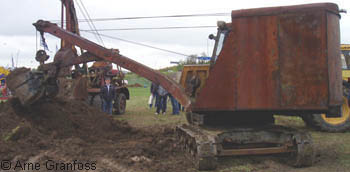Refugees from Finland

 UNDER CONSTRUCTION Version 0.41
UNDER CONSTRUCTION Version 0.41
|
Sweden in World War II - across borders
|
 |
![]()
![]()
During World War II Finland and the Soviet Union fought two wars with each other. First 1939-40 when the Soviet Union attacked, and then 1941-44 when Finland attacked first.
![]()
After the Soviet Union attack on Finland 30 November 1939, more than 7 000 Finnish refugees came to Sweden. [s10]
![]()
During WWII 44 000 children had been sent from Finland to Sweden, away from the war. [s19]
One point of view included in the book: "Sweden was always very willing to provide diplomatic support and mediation, but would not go further in material assistance than to receive about 20,000 Finnish children.". [s58]
![]()
When Finland and the Soviet Union had reached an armistice agreement that began in the morning of 4 September 1944, it meant a big change in Finland.
After fighting with support of German troops, they changed side and had to force the Germans out of Finland. The Germans did not leave willingly.
A battle between Finnish and Germans before the armistice contributed to Finlands declaration of war to Germany. As the Germans were pushed northwestwards by troops from
Finland and the Soviet Union they tried to destroy everything they thought the enemies could have any use of. [s19]
After Finlands armistice with the Soviet Union, 200 000 German soldiers were to leave Finland during a short period. The retreat began on 4 September. Hitlers order was that all real property in German controlled areas should be destroyed. Finlands president Mannerheim felt so uneasy about what could happen with the Germans, so on 7 September he decided that all civilians in northern Finland should be evacuated. 150 000 civilians should be moved southwards in Finland or to Sweden. [s51]
On 1 October 1944 the Finnish soldiers began to attack the Germans who had not left northern Finland. Among others the Finnish border city Torneå became a war zone. In Haparande, on the Swedish side of the border (along the Torne river), women and children were evacuated on 5 Oktober. Swedes in Sweden were spectators while German soldiers blew up bridges, set buildings afire and fell telephone poles. Grenades and bullets landed also in Sweden. On 8 October Torneå was under Finnish control. [s51]
During a German counterattack further north, some Finnish escaped by a swim across the river to Sweden. [s51]
![]()
On 3 September 1944 Finland had asked Sweden about the possibility to evacuate up to 100 000 persons from northern Finland to Sweden. The Swedish organisation began its work on 12 September. When it was closed on 11 November, more than 48 500 Finnish refugees had been taken care of. And more than 28 000 cows and horses. [s77]
During the fights in northern Finland, 38 000 Finns fled to Sweden. [s19]
56 000 civilian Finns were evacuated to Sweden, with 30 000 animals. [s51]
![]()
The armistice between Finland and the Soviet Union declared on 19 September 1944 triggered Plan Stella Polaris in Finland. Executed to look as usual refugee shipments, more than 200 cases with Finnish secret documents, and surveillance and crypto equipment was transported to Härnösand in Sweden. After discussions with the Swedish customs authorities who demanded to check the cargo, the ships instead were taken to a Swedish naval base. The material was then freighted to a hotel in Stockholm. A group of Finnish intelligence workers also came to Sweden, and some remianed in Sweden after WWII. [s59]
Up towards 1000 Finns arrived in Härnösand and Gävle in connection with Stella Polaris. The chief of the Finnish organisation was surprised at how many had followed, and most of them were sent with Swedish train to Haparanda in northern Sweden to discretely get back to Finland. [s59]
![]()
Towards the end of WWII a few Finnish sailors fled to Sweden when their Finnish ships were in Swedish harbours or Swedish waters. [s60]
![]()
On 24 April 1945 Finland announced that there no longer were any German troops in Finland. [s58]
![]()
2019-04-07. www.granfoss.se. Text/pictures: Arne Granfoss